Search results for 'CIS355A FINAL PROJECT GUI APPLICATION'
-

ITS320 Module 1 Option 1 Create a Python Application that outputs mouse
Regular Price: $10.00
Special Price $8.00
ITS320 Module 1 Option 1 Create a Python Application that outputs mouse
Option #1: Create a Python Application
Write a Python Program that outputs this mouse:
(\-.
/ _`>
_) / _)=
( / _/
`-.__(___)_
Assignment Instructions
1. Install Python3 on your computer if you do not have it already installed it. You can download it from https://www.python.org/downloads/release/python-362/.
2. Make sure you check the box to include the Python executable in your environment path.
3. Edit your Python program using your choice of editor such as Notepad, Notepad++, or Idle. Idle is a simple Python interactive development environment that installed with your Python package.
4. Save your Python code using the file name ITS320_CTA1_Option1.py.
5. Execute your Python code in command prompt as python ITS320_CTA1_Option1.Assignment Deliverables
Learn More
• Submit the text file named ITS320_CTA1_Option1.py that contains your Python code into the Module 1 drop box -

ITS320 Module 1 Option 2 Create a Python Application that read two integers and print two lines
Regular Price: $10.00
Special Price $8.00
ITS320 Module 1 Option 2 Create a Python Application that read two integers and print two lines
Option #2: Create a Python Application
Read two integers and print two lines. The first line should contain integer division, //, the second line should contain float division, /, and the third line should contain modulo division, %. You do not need to perform any rounding or formatting operations.
Input Format The first line contains the first integer. The second line contains the second integer.
Output Format Print the three lines as described above.Sample Input
4
3Sample Output
1
1.3333333333333333
1Assignment Instructions
1. Install Python3 on your computer if you don’t have it already installed. Make sure you check the box to include the Python executable in your environment path.
2. Edit your Python program using your choice of editor such as Notepad, Notepad++, or Idle. Idle is a simple Python interactive development environment that installed with your Python package.
3. Save your Python code in a file name ITS320_CTA1_Option2.py.
4. Execute your Python code in command prompt as python ITS320_CTA1_Option2.Assignment Deliverables
Learn More
Submit the text file named ITS320_CTA1_Option2.py that contains your Python code into the Module 1 drop box. -
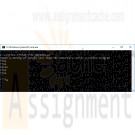
ITS320 Module 2 Option 1 Creating a Python Application for string validation
Regular Price: $10.00
Special Price $8.00
ITS320 Module 2 Option 1 Creating a Python Application for string validation
Option #1: Creating a Python Application
Python has built-in string validation methods for basic data. It can check if a string is composed of alphabetical characters, alphanumeric characters, digits, etc.
str.isalnum() This method checks if all the characters of a string are alphanumeric (a-z, A-Z and 0-9).
>>> print 'ab123'.isalnum()
True
>>> print 'ab123#'.isalnum()
False
str.isalpha() This method checks if all the characters of a string are alphabetical (a-z and A-Z).
>>> print 'abcD'.isalpha()
True
>>> print 'abcd1'.isalpha()
False
str.isdigit() This method checks if all the characters of a string are digits (0-9).
>>> print '1234'.isdigit()
True
>>> print '123edsd'.isdigit()
False
str.islower() This method checks if all the characters of a string are lowercase characters (a-z).
>>> print 'abcd123#'.islower()
True
>>> print 'Abcd123#'.islower()
FalseSAMPLE
str.isupper() This method checks if all the characters of a string are uppercase characters (A-Z).
>>> print 'ABCD123#'.isupper()
True
>>> print 'Abcd123#'.isupper()
FalseAssignment Instructions:
Write a Python program that performs the following tasks:
1. Read from the console an arbitrary string S of length less than 50 characters.
2. In the first output line, print True if S has any alphanumeric characters. Otherwise, print False.
3. In the second line, print True if S has any alphabetical characters. Otherwise, print False.
4. In the third line, print True if S has any digits. Otherwise, print False.
5. In the fourth line, print True if S has any lowercase characters. Otherwise, print False.
6. In the fifth line, print True if S has any uppercase characters. Otherwise, print False.
7. Develop Python code that implements the program requirements.Assignment Deliverables:
Learn More
• Submit a text file containing your Python code into the Module 2 drop box. Name your file ITS320_CTA2_Option1.py -
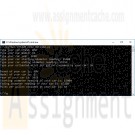
ITS320 Module 2 Option 2 Creating a Python Application using dictionary
Regular Price: $10.00
Special Price $8.00
ITS320 Module 2 Option 2 Creating a Python Application using dictionary
Option #2: Creating a Python Application
Assignment Instructions
Develop a Python application that incorporates using appropriate data types and provides program output in a logical manner. Your program should prompt a user to enter a car brand, model, year, starting odometer reading, an ending odometer reading, and the estimated miles per gallon consumed by the vehicle. Store your data in a dictionary and print out the contents of the dictionary.Assignment Submission Instructions:
Learn More
Submit a text file containing your Python code into the Module 2 drop box. Name your file ITS320_CTA2_Option2.py. -
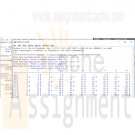
CIS115 Week 4 Lab Multiplication Table in Python
Regular Price: $12.00
Special Price $10.00
CIS115 Week 4 Lab Multiplication Table in Python
CIS115 Week 4 Lab Overview
Title of Lab: Multiplication Table in Python
Summary
This week's lab is to create a simple multiplication table using nested loops and if statements.
Prompt the user for the size of the multiplication table (from 2x2 to 10x10). Use a validation loop to display a warning if the number is less than 2 or greater than 10 and prompt the user to enter the data again until they enter a valid number.
Put a # after any even number in your table (odd numbers will have just a space/nothing after them).Deliverables
• A source code Python file.
• A Word document containing both source code and the screen print of the program outputs.Lab Steps
Sample Output:
The output should be something similar to the following.
What size multiplication table would you like? (2 - 10): 1
Invalid entry - Enter a number between 2 and 10
What size multiplication table would you like? (2 - 10): 15
Invalid entry - Enter a number between 2 and 10
What size multiplication table would you like? (2 - 10): 10--- Multiplication Table ( 10 x 10 ) ---
1 2 3 4 5 6 7 8 9 10
---------------------------------------------------------------------------
1 | 1 2 # 3 4 # 5 6 # 7 8 # 9 10 #
2 | 2 # 4 # 6 # 8 # 10 # 12 # 14 # 16 # 18 # 20 #
3 | 3 6 # 9 12 # 15 18 # 21 24 # 27 30 #
4 | 4 # 8 # 12 # 16 # 20 # 24 # 28 # 32 # 36 # 40 #
5 | 5 10 # 15 20 # 25 30 # 35 40 # 45 50 #
6 | 6 # 12 # 18 # 24 # 30 # 36 # 42 # 48 # 54 # 60 #
7 | 7 14 # 21 28 # 35 42 # 49 56 # 63 70 #
8 | 8 # 16 # 24 # 32 # 40 # 48 # 56 # 64 # 72 # 80 #
9 | 9 18 # 27 36 # 45 54 # 63 72 # 81 90 #
10 | 10 # 20 # 30 # 40 # 50 # 60 # 70 # 80 # 90 # 100 #
Hints:
• The outer loop will start each new row.
• The inner loop will control the display of each column in the row.
• Note that to keep the numbers right-aligned, there are different amounts of space before single digit numbers (those less than 10), double digit numbers (those between 10-99), and triple digit numbers (100).
• The row labels can be added to your inner loop (note that there are different amounts of space required after the number in the row labels.
• The column labels should use a separate loop(s) that run before the main outer loop.
• You can continue printing on the same line using end="" in your print statement. This will come in handy if you want to print several things on one line inside a loop. For example, assuming the value of name is Ada, the following will print "Hello Ada" on one line:
print("hello ", end="")
print(name, end="")Tips:
Learn More
• Start early!
• Do the basic table first without worrying about spacing or lining things up, and don't include row or column headings (add those later).
• Once you get the numbers in the correct position, think about adding the proper amount of space before each number to line things up.
• Once the columns line up, add the #/space for even/odd numbers.
• Once the basic table is working, then add the row and column headings, and finally the main title.
• Test as you go! -
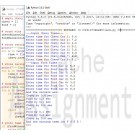
CIS115 Week 5 Lab Race Time Sorting in Python
Regular Price: $12.00
Special Price $10.00
CIS115 Week 5 Lab Race Time Sorting in Python
CIS115 Week 5 Lab Overview
Title of Lab: Race Time Sorting in Python
Summary
Store the times into arrays called Chevy[ ] and Ford[ ]. Then list the winner of each pair, giving the number of seconds the winner won by. At the end declare which team won based on which team had the most wins.Deliverables
• A source code Python file.
• A Word document containing both source code and the screen print of the program outputs.Lab Steps
There are eight cars in each team called Chevy and Ford. One car from each team races its opponent on the drag strip. Read in the racing times for the eight Chevy cars and then read in the times for the eight Ford cars.Sample Match:
---Input Chevy Times---
Enter time for Chevy Car 1: 5.4
Enter time for Chevy Car 2: 7.2
Enter time for Chevy Car 3: 4.0
Enter time for Chevy Car 4: 9.1
Enter time for Chevy Car 5: 5.8
Enter time for Chevy Car 6: 3.9
Enter time for Chevy Car 7: 6.2
Enter time for Chevy Car 8: 8.1
---Input Ford Times---
Enter time for Ford Car 1: 5.8
Enter time for Ford Car 2: 6.9
Enter time for Ford Car 3: 3.9
Enter time for Ford Car 4: 9.2
Enter time for Ford Car 5: 5.8
Enter time for Ford Car 6: 3.8
Enter time for Ford Car 7: 6.0
Enter time for Ford Car 8: 8.5
And the winners are:
Chevy by 0.4 sec
Ford by 0.3 sec
Ford by 0.1 sec
Chevy by 0.1 sec
Tie!
Ford by 0.1 sec
Ford by 0.2 sec
Chevy by 0.4 sec
And the winning team is: F O R D !Specifications:
Learn More
• Accept the racing times for each of the Chevy cars into the array Chevy[ ].
• Accept the racing times for each of the Ford cars into the array Ford[ ].
• Then declare the wining car for each race, giving the winning time in seconds.
• If the times are identical, then declare the race was a tie.
• Finally, declare which team won the match, assuming a tie is possible. -
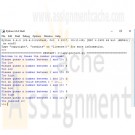
CIS115 Course Project Guess The Number
Regular Price: $15.00
Special Price $12.00
CIS115 Course Project Guess The Number
You will create a program that will ask the user to guess a number between 1 and 10. The pseudocode is below. Be sure to import random at the beginning of your code and use a comment block explaining what your program does
#Guess the number week 4
#Name:
#Date:
#Random number, loop while true
#ask user for number.
#if number is too high or too low, tell user, if they guessed it break out of loopDisplay "Welcome to my Guess the number program!"
random mynumber
while True
Display "Guess a number between 1 and 10"
Get guess
if (guess<mynumber)
Display "Too low"
else if (guess>mynumber)
Display "Too high"
else if (guess==mynumber)
Display "You guessed it!"When you run your program the result should be something like this:
Welcome to my Guess the number program!Please guess a number between 1 and 10: 5
Too high
Please guess a number between 1 and 10: 4
Too high
Please guess a number between 1 and 10: 3
Too high
Please guess a number between 1 and 10: 2
You guessed it!Be sure to submit your assignment
Learn More -
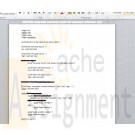
IT 140 Higher/Lower Game Pseudocode Project One
Regular Price: $8.00
Special Price $5.00
IT 140 Higher/Lower Game Pseudocode Project One
Higher/Lower Game Description
Your friend Maria has come to you and said that she has been playing the higher/lower game with her three-year-old daughter Bella. Maria tells Bella that she is thinking of a number between 1 and 10, and then Bella tries to guess the number. When Bella guesses a number, Maria tells her whether the number she is thinking of is higher or lower or if Bella guessed it. The game continues until Bella guesses the right number. As much as Maria likes playing the game with Bella, Bella is very excited to play the game all the time. Maria thought it would be great if you could create a program that allows Bella to play the game as much as she wants.For this assignment, you will be designing pseudocode for a higher/lower game program. The higher/lower game program uses similar constructs to the game you will design and develop in Projects one and Two.
1) Review the Higher/Lower Game Sample Output for more detailed examples of this game. As you read, consider the following questions:
What are the different steps needed in this program? How can you break them down in a way that a computer can understand?
What information would you need from the user at each point (inputs)? What information would you output to the user at each point?
When might it be a good idea to use "IF" and "IF ELSE" statements?
When might it be a good idea to use loops?2) Create a pseudocode that logically outlines each step of the game program so that it meets the following functionality:
Prompts the user to input the lower bound and upper bound. Include input validation to ensure that the lower bound is less than the upper bound.
Generates a random number between the lower and upper bounds
Prompts the user to input a guess between the lower and upper bounds. Include input validation to ensure that the user only enters values between the lower and upper bound.
Prints an output statement based on the guessed number. Be sure to account for each of the following situations through the use of decision branching:
What should the computer output if the user guesses a number that is too low?
What should the computer output if the user guesses a number that is too high?
What should the computer output if the user guesses the right number?
Loops so that the game continues prompting the user for a new number until the user guesses the correct number.OPTIONAL: If you would like to practice turning your designs into code, check out the optional 9.1 LAB: Higher/Lower Game in zyBooks. This step is optional but will give you additional practice turning designs into code, which will support your work in moving from Project One to Project Two.
Learn More



